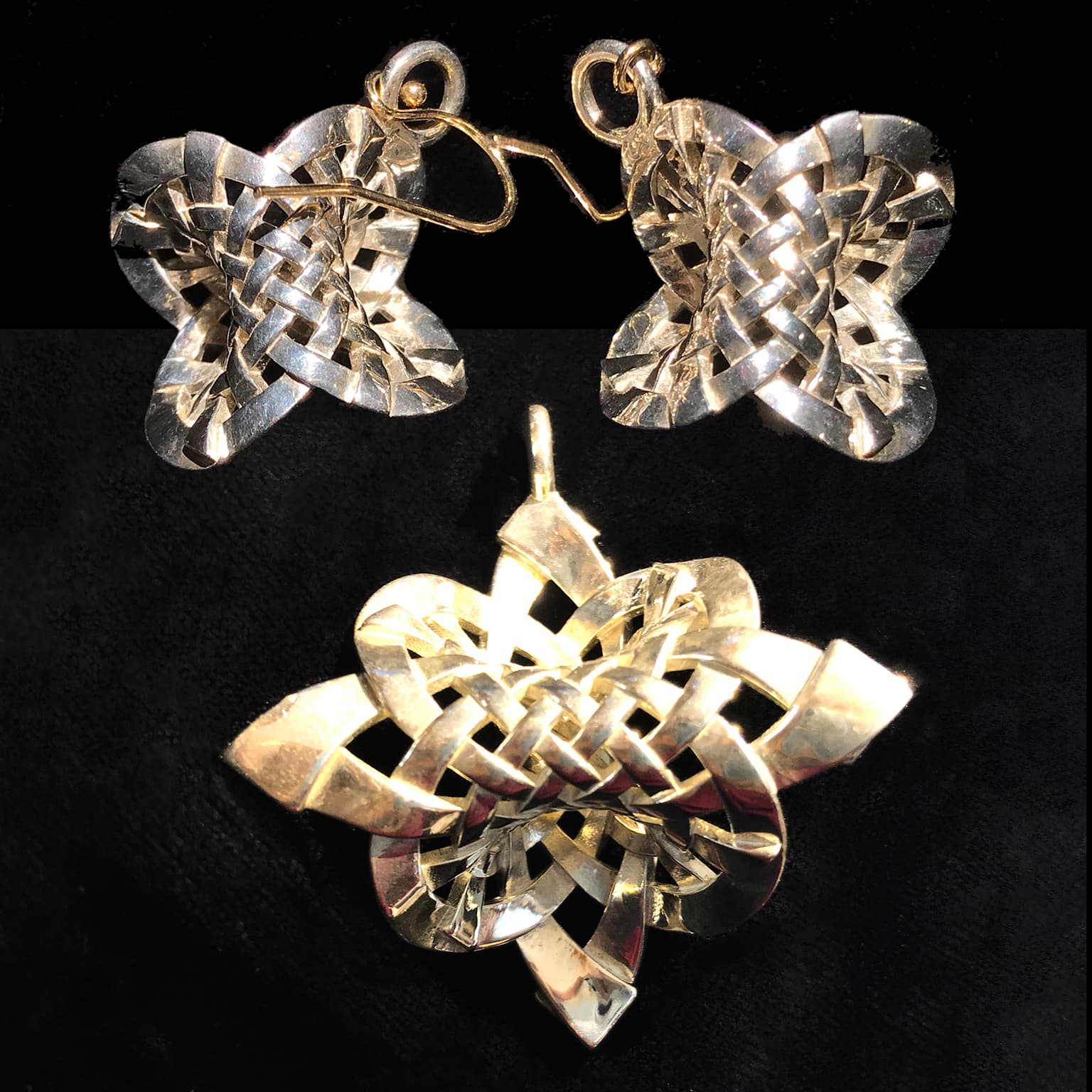2019 Icerm Illustrating Mathematics
Sabetta Matsumoto
Artists
Sabetta Matsumoto
Associate Professor of Physics
School of Physics, Georgia Tech
Atlanta, Georgia, USA
Statement
Sabetta Matsumoto is an Assistant Professor in the School of Physics at the Georgia Institute of Technology. She uses differential geometry, knot theory, and geometric topology to understand the geometry of materials and their mechanical properties. She is passionate about using textiles, 3D printing, and virtual reality to teach geometry and topology to the public.
Artworks

Woven Hopf Fibrations
15 x 15 x 8 cm
sterling silver
2018
This matching set of pendant and earrings depicts a pair of orthogonal Hopf fibrations on the Clifford torus. To get the weave, each curve in the fibration is undulated normal to the Clifford torus in S^3. These resulting woven ribbons were stereographically projected down to R^3. These pieces were 3D printed in wax and cast in silver.

S^3 Jewelry
20 x 20 x 2 cm
brass, 18k gold plated brass
2016-2018
My jewelry takes objects in our ambient three-dimensional euclidean space and maps their midlines to an equator in S^3, with a fixed number of pi-twists. The results are then stereographically projected back to R^3. There are two main designs: (left) one uses intermeshed ladders to create a pair of interlocking Möbius bands, and (right) the other is based upon the twisted Scherk saddle tower with six ends.

A Klein Quartic Quilt
20 x 20 x 20 cm
Fabric
2014
The Klein's Quartic Quilt is a model of the Klein Quartic Curve. The Klein Quartic – a platonic structure made from 24 regular heptagons meeting 3 at a vertex – is the maximally symmetric genus 3 surface. I chose to quilt the Klein Quartic because it was the medium most amenable to showing as many of 168 symmetries as possible, as it can be inverted through each of the holes. Each quilt block is a regular heptagon, creating a regular {7,3} tiling. The dual is embroidered in gold, displaying the {2,3,7} triangle tiling of the Klein Quartic. Although the {7,3} tiling is intrinsically a hyperbolic structure, the fabric faces of the Klein Quartic Quilt are euclidean. Each of the 17 elements of the Wallpaper Group appear in different fabrics.